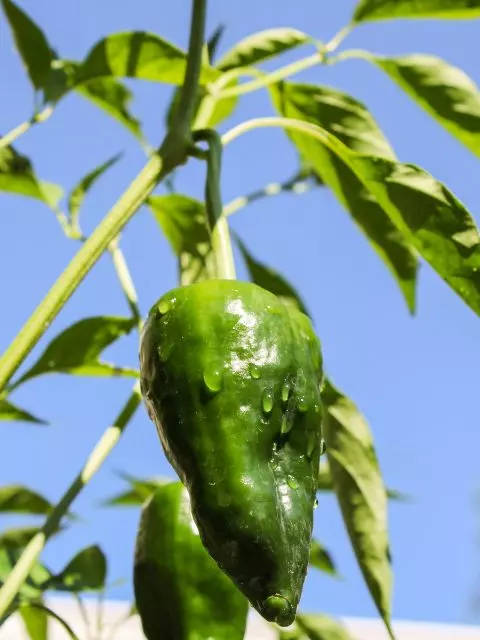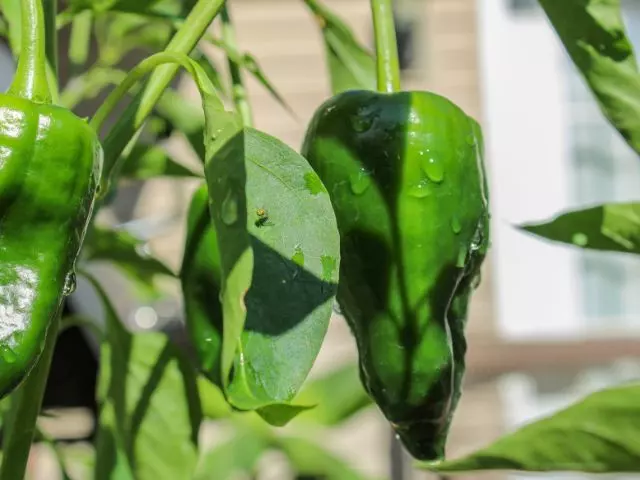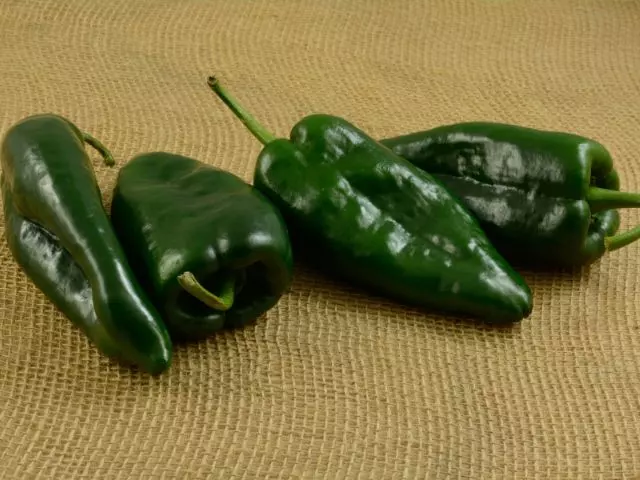Poblano peppers fall into the lower range of spiciness on the Scoville scale, with a heat level between 1,000 and 2,000 Scoville heat units (SHU). However, despite their mild taste, do not underestimate their popularity. It is originally from the state of Puebla, Mexico. The people of Puebla are known as Poblanos, like these famous peppers. When Poblano peppers reach their mature size and have their characteristic color, that is usually the best to harvest them. So, when are Poblano peppers ready to pick? Continue reading to find out when to pick poblano peppers correctly.
Poblano peppers are fresh, fleshy, large, and usually dark green with shiny skin. It is not exactly spicy, but it has a well-defined flavor, which can sometimes be very hot. Regarding nutritional properties, Poblano peppers’ main notable nutritious characteristic is their high vitamin C content.
Table of Contents
When to Pick Poblano Peppers
Poblano peppers are typically ready to pick when they reach their full size and have developed a glossy, dark green color. The exact timing can vary depending on growing conditions and the specific variety of poblano peppers you are cultivating.
According to the University of Georgia, you can expect to pick poblano peppers approximately 65 days after transplanting the seedlings into the garden. Another indicator is when the peppers are firm to the touch. If you prefer a milder flavor, you can pick them at this stage.
However, if you prefer a spicier taste, you can leave poblano peppers on the plant for a more extended period until they turn red or show signs of ripening. It is recommended to pick poblano peppers when they reach a length of approximately 4 to 6 inches (10 to 15 cm). It’s essential to closely monitor the peppers and pick them before they become overly ripe or wrinkled.

How to Pick Poblano Peppers
Examine the poblano peppers and ensure they have reached the desired size and color. Look for firm and glossy peppers without any signs of damage or disease. Remember that if you want the poblano peppers to be a little spicier, you should let them ripen more and be red.
Use sharp, disinfected scissors or shears to pick poblano peppers. Hold the stem firmly and use clean garden shears or scissors to cut the pepper just above the stem, leaving a small portion attached to the fruit.
Avoid pulling or twisting the peppers off the plant, as this may damage them or the peppers themselves. Using the right tools, you will pick poblano peppers without damaging the plant, and the plant can continue producing fruit.
Handle the poblano peppers with care to prevent bruising or crushing them. Poblanos have relatively thin skin, and mishandling can affect their quality. Check your plants regularly and harvest the ripe peppers promptly to encourage further fruit production.
Typically, an individual poblano pepper plant can bear up to eight pepper fruits on average, yielding 20 to 40 peppers during the entire growth period. Normally with my poblano plants, I get up to 30 poblano peppers.

How to Preserve Poblano Peppers
I am confident you will have an excellent Poblano pepper harvest after following our gardening tips. Now, suppose you have a large quantity of poblano peppers. In that case, you can preserve them and have them ready whenever needed. If you will not use them yet, the first recommendation is not to wash poblano peppers. Fresh peppers can remain in good uncut condition for up to 7 days when stored in the refrigerator. Store them in a breathable bag in the low-humidity drawer of the refrigerator. Refrigerate your cut peppers in an airtight container.
To preserve poblano peppers for a longer period, you can do the following:
Freeze
Wash, peel, chop, and freeze peppers in a tray, then transfer to an airtight container.
You can also blanch or roast them beforehand (peppers do not need to be blanched or roasted) and store them in zip-lock bags.
They are best used for cooked dishes or wet consistency dishes such as soups and stews, as freshness can be lost when thawed.
Dehydrate Poblano Peppers
Hang the peppers in a well-ventilated place in the sun, and do not expose them to dew. This is an option for thin-skinned peppers such as poblano peppers.
Another way to dry peppers is to place them in the oven at 120ºF / 50ºC for several hours until completely dry.
You can use a dehydrator for quick drying and a variety of peppers. Dried peppers are perfect for broths, stews, and sauces.
Pickled
Pickled peppers are ideal to accompany pizza, tacos, nachos, eggs, hot dogs, and practically everything.
It is straightforward to make a pickle:
- Heat 1 part water to 1 part distilled white vinegar, season with sugar and salt to taste, and pour over sliced peppers.
- Chill, cover, and refrigerate for up to 3 weeks.

Final Thoughts About Harvesting Poblano Peppers
In conclusion, the ideal time to pick poblano peppers depends on personal preference and the desired flavor. For a milder taste, harvest them when they are around 4 to 6 inches (10 to 15 cm) long and have a glossy, dark green color.
To harvest poblano peppers from the plant, proper handling techniques, such as using scissors, help preserve their quality.
I trust this information has guided the optimal time to pick poblano peppers. If you are passionate about peppers, I recommend reading our article about when to pick Ghost Peppers.

